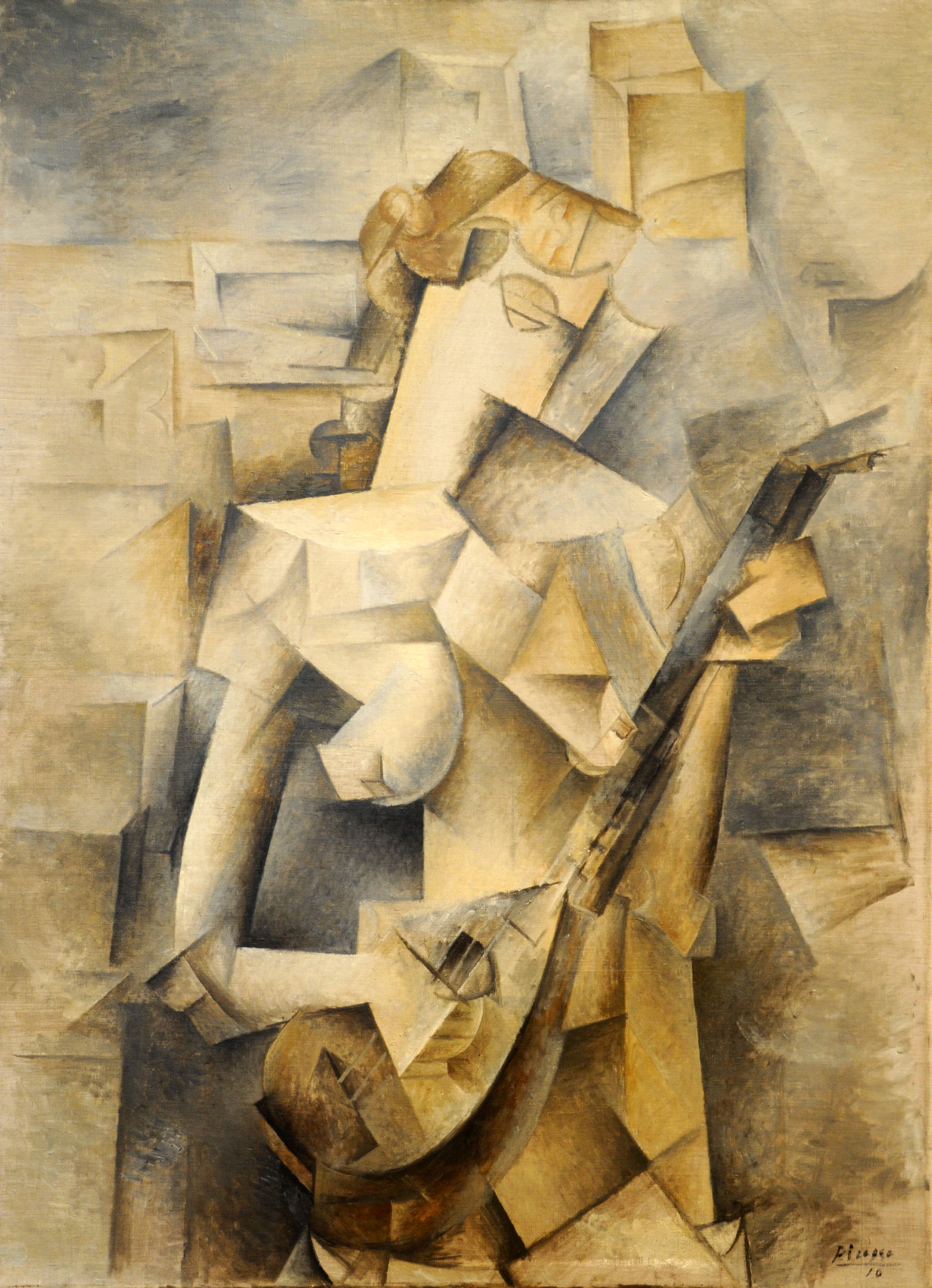


In his seminal book Cubism: A History and an Analysis, artist and historian John Golding describes Pablo Picasso’s cubist portrait of Fanny Tellier as a valuable peek into the intentions and practice that set cubism apart from traditional art-making of the time: “The fact that at the time Picasso saw the work as unfinished, allows us an insight into his aesthetic intentions and his technical procedure. In the first place, that legibility of this canvas demonstrates conclusively that although cubist paintings were becoming more abstract in appearance, the artists were still deeply conditioned, at least in the early stages of their works, by the material existence and the physical appearance of their subjects.”
Cubist art attains a sort of optical vibration from its mashup of multiple perspectives, our brain’s recognition of an object or figure is tested by the abstraction of its form. Girl with a Mandolin somehow sidesteps the tension felt in so many cubist works. Her silhouette, while fragmented, is still clear, her posture still emotive. The woman with the mandolin has been elevated to iconography, but Fanny Tellier the person is still there beneath the surface. According to Golding, if Picasso had taken the time to resolve the work, it would be “simultaneously more elaborate, more abstract, and more consistent in style”—and you have to wonder, how much of Fanny Tellier would be left?
